Design a key-value store
Question
- The size of a key-value pair is small: less than 10 KB.
- Ability to store big data.
- High availability: The system responds quickly, even during failures.
- High scalability: The system can be scaled to support large data set.
- Automatic scaling: The addition/deletion of servers should be automatic based on traffic.
- Tunable consistency.
- Low latency.
Single server key-value store
- Store all key-value pairs in a hash table
- Can be optimised using:
- Data compression
- Store frequent data in memory and the rest on disk
Distributed key-value store
Data partition
- Use Consistent Hashing
- Minimise data movement in case of node are added or removed
- Distribute data across servers evenly
Automatic scaling
- Servers should be added and removed automatically depending on the load
Heterogeneity
- Number of virtue node is proportional to the server capacity
Data replication
- To achieve high availability, data must be replicated asynchronously
- Usually over the next N server clockwise from the consistent hashing of the servers
Consistency (Quorum consensus)
-
Definitions
- N = The number of replica
- W = For a write operation to be considered as successful, write operation much be acknowledged from W copies
- R = As above, but for reads
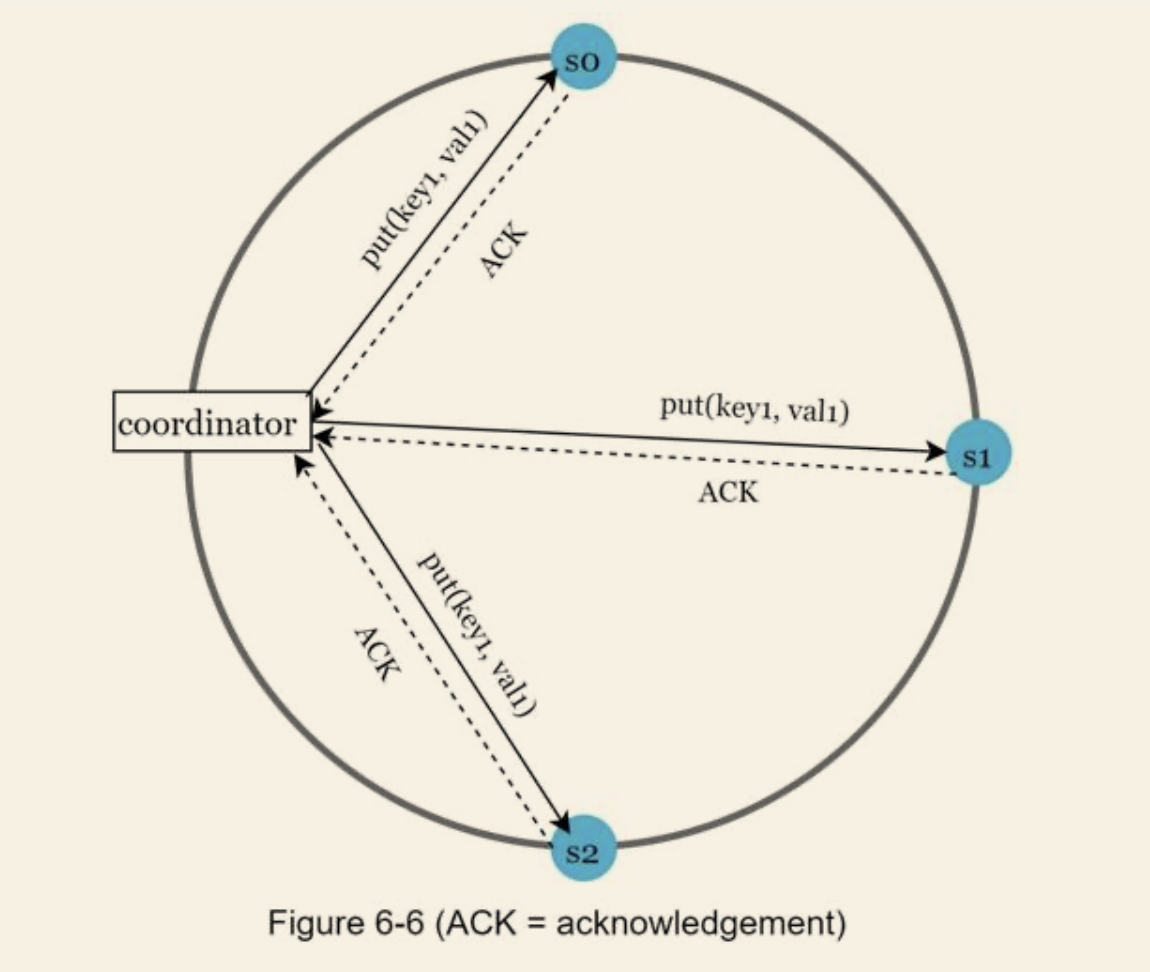
-
Possible setups:
- If R = 1 and W = N, the system is optimised for a fast read.
- If W = 1 and R = N, the system is optimised for fast write.
- If W + R > N, strong consistency is guaranteed (Usually N = 3, W = R = 2).
- If W + R <= N, strong consistency is not guaranteed.
Inconsistency resolution: versioning
- Assume a vector clock is represented by D([S1, v1], [S2, v2], …, [Sn, vn]), where D is a data item, v1 is a version counter, and s1 is a server number, etc. If data item D is written to server Si, the system must perform one of the following tasks.
- Increment vi if [Si, vi] exists.
- Otherwise, create a new entry [Si, 1].
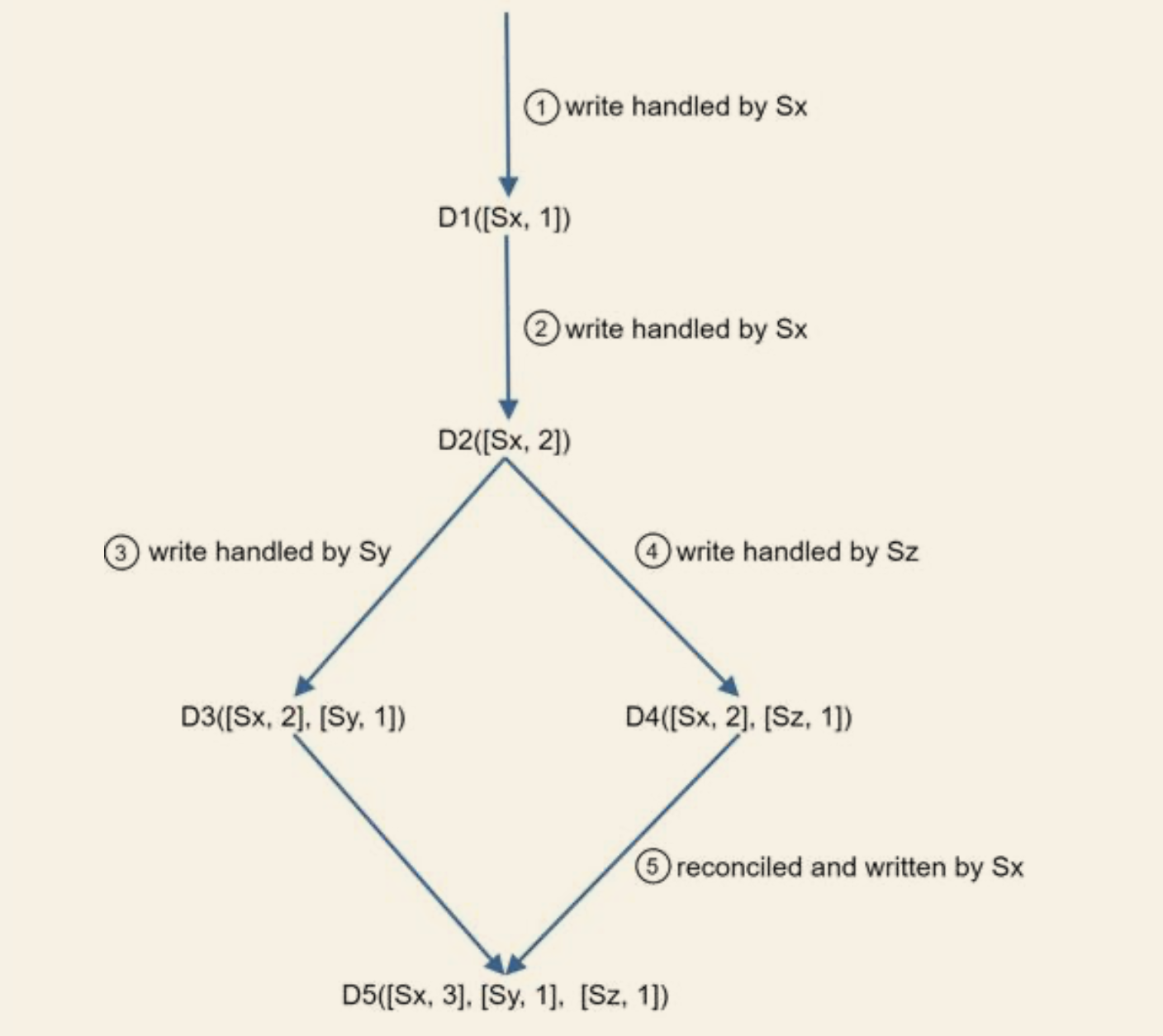
- If either the versioning or the servicer does not match, conflicts are identified.
- Downsides
- Vector clocks add complexity to the client, which requires the implementation of conflict resolution logic
- The server and version pair may grow rapidly.
- We can set a threshold length, if exceeds the limit, the oldest pair are removed
- May result inaccuracy in identifying conflicts, by based on a Dynamo paper, Amazon has not yet encountered this problem in production
Handling failures
Failure detection
Handling temporary failures
- "Sloppy Quorum"
- Instead of enforcing the quorum requirement, the system chooses the first W healthy servers for writes and first R healthy servers to read on the hash ring.
- Offline servers are ignored
- Hinted handoff
- For offline servers, all tasks are dealt according to consistent hashing cycle
- Once server back online, all changes will be pushed back to achieve data consistency
Handling permanent failure
Use Merkel Tree to identify which bucket (set of key-value pair) are not synchronised and synchronise those buckets only.
System architecture diagram
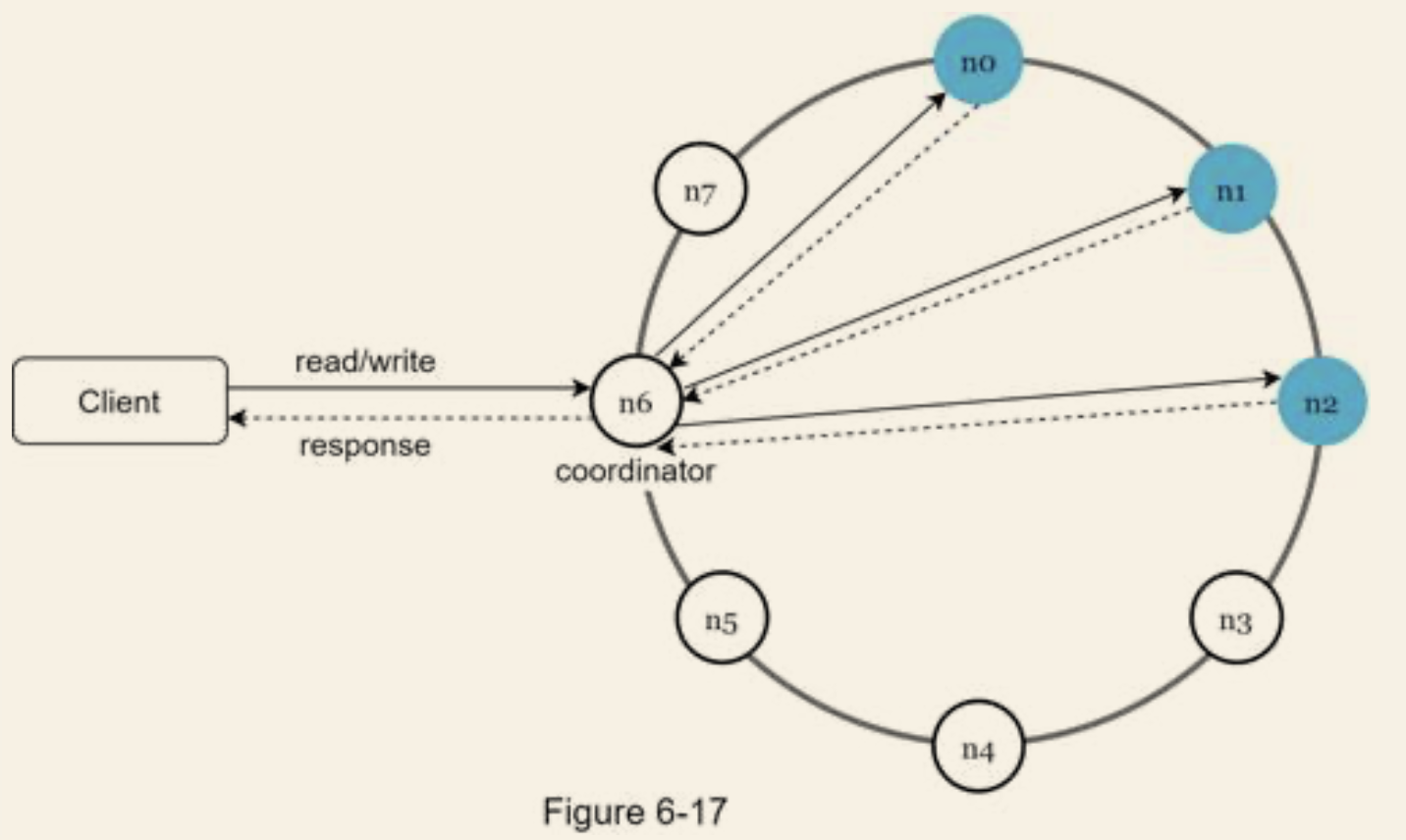
- Clients communicate with the key-value store through simple APIs: get(key) and put(key, value).
- A coordinator is a node that acts as a proxy between the client and the key-value store.
- Nodes are distributed on a ring using consistent hashing.
- The system is completely decentralised so adding and moving nodes can be automatic.
- Data is replicated at multiple nodes.
- There is no single point of failure as every node has the same set of responsibilities.
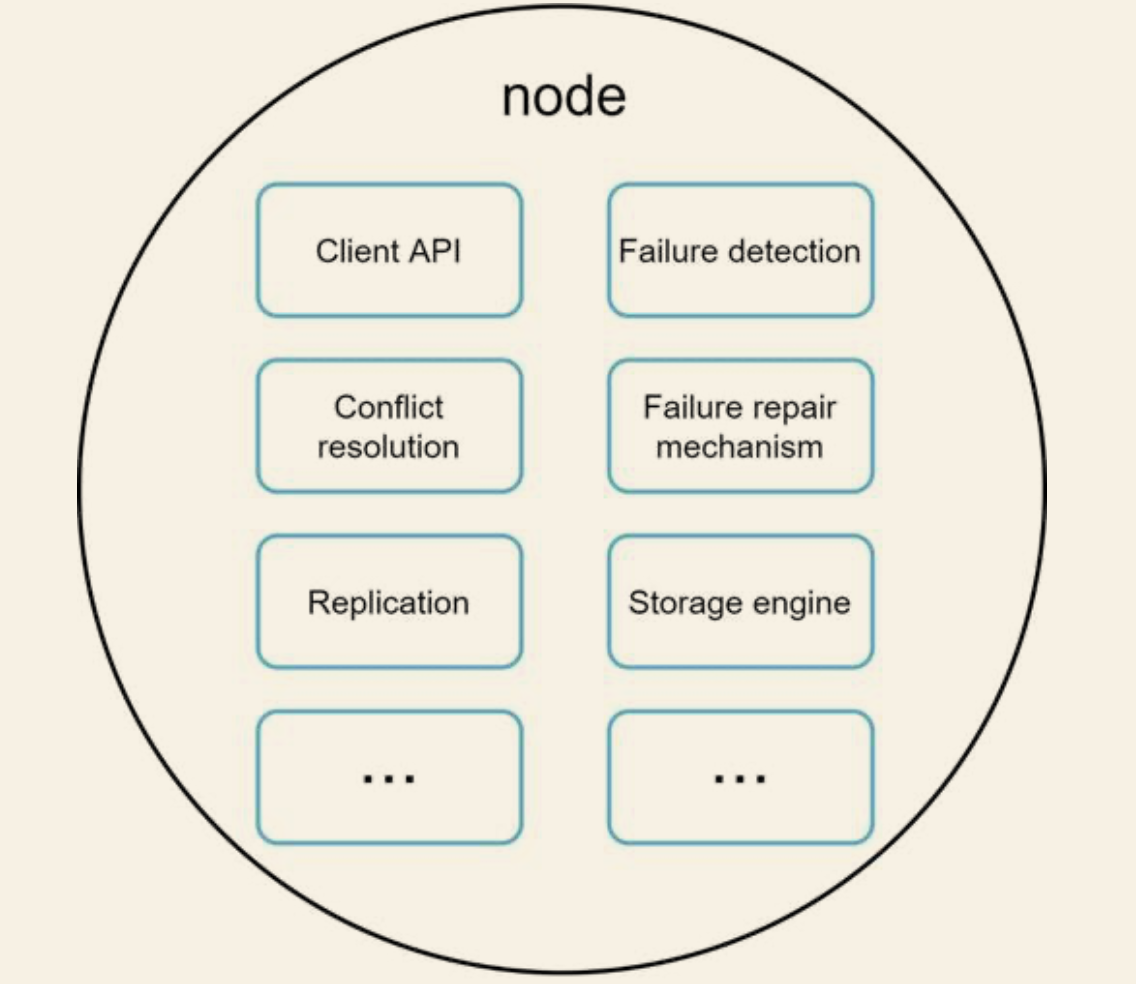
Write and read path
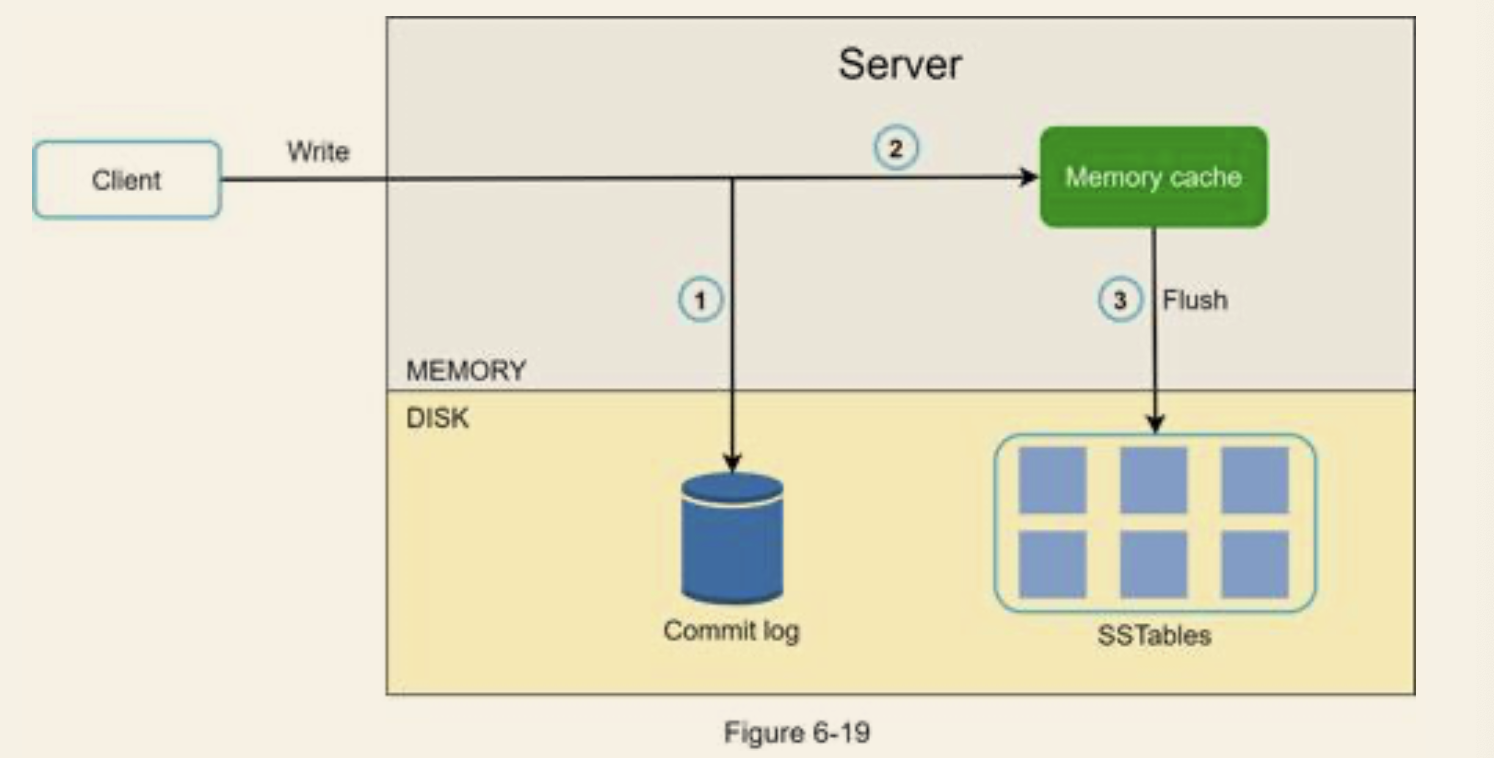
- The write request is persisted on a commit log file.
- Data is saved in the memory cache.
- When the memory cache is full or reaches a predefined threshold, data is flushed to SSTable [9] on disk. Note: A sorted-string table (SSTable) is a sorted list of <key, value> pairs. ”
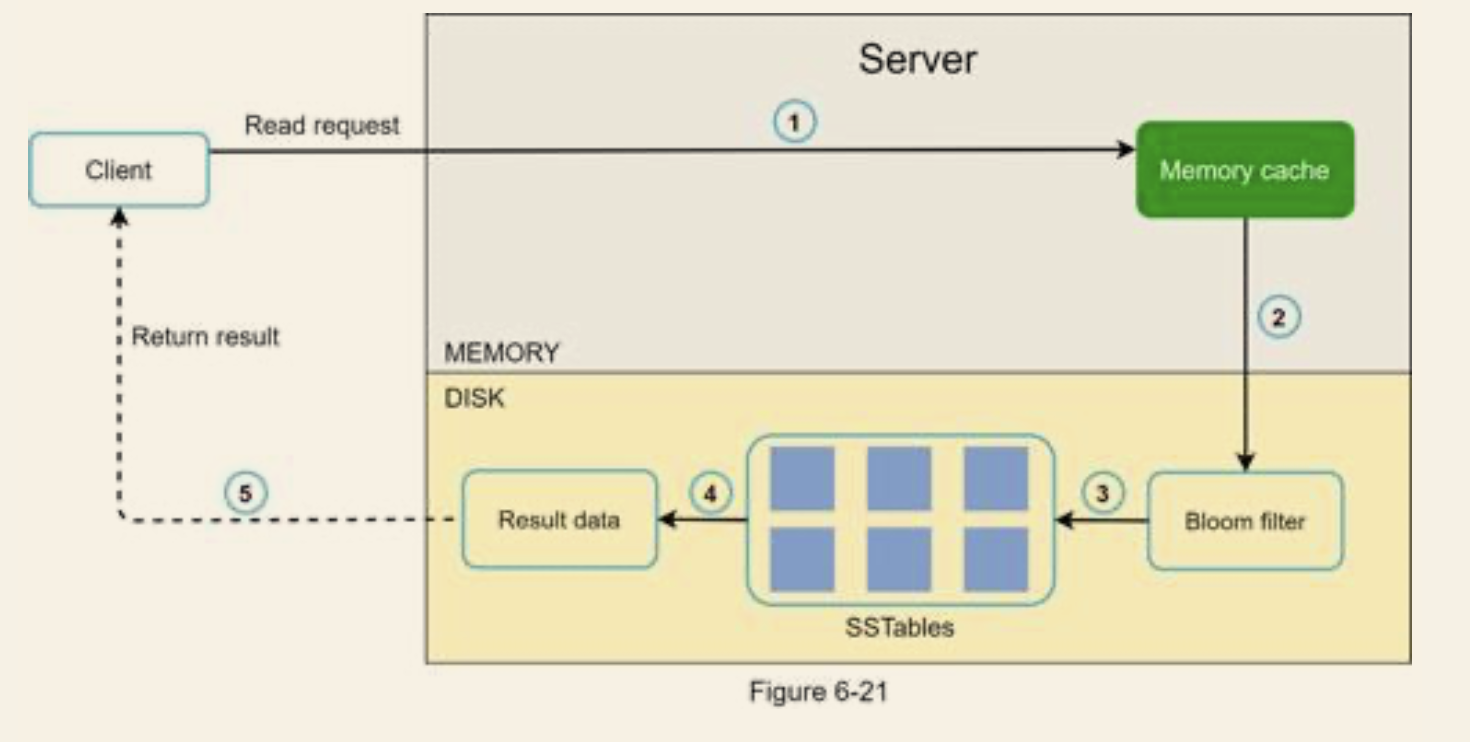
- The system first checks if data is in memory. If not, go to step2
- If data is not in memory, the system checks the bloom filter.
- The bloom filter is used to figure out which SSTables might contain the key.
- SSTables return the result of the data set.
- The result of the data set is returned to the client.